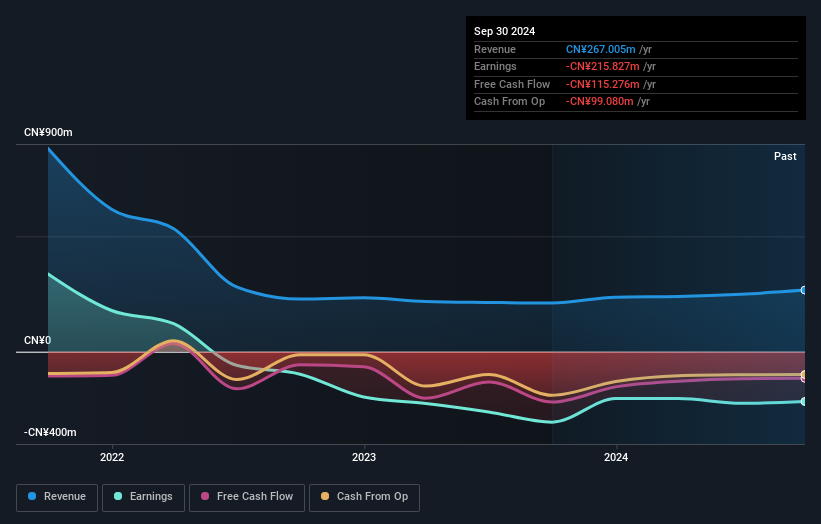Key Insights
- Insiders appear to have a vested interest in ShenZhen Consys Science&Technology's growth, as seen by their sizeable ownership
- 60% of the business is held by the top 2 shareholders
- Using data from company's past performance alongside ownership research, one can better assess the future performance of a company
To get a sense of who is truly in control of ShenZhen Consys Science&Technology Co., Ltd. (SHSE:688788), it is important to understand the ownership structure of the business. The group holding the most number of shares in the company, around 60% to be precise, is individual insiders. Put another way, the group faces the maximum upside potential (or downside risk).
Clearly, insiders benefitted the most after the company's market cap rose by CN¥398m last week.
In the chart below, we zoom in on the different ownership groups of ShenZhen Consys Science&Technology.

What Does The Institutional Ownership Tell Us About ShenZhen Consys Science&Technology?
 Many institutions measure their performance against an index that approximates the local market. So they usually pay more attention to companies that are included in major indices.
Many institutions measure their performance against an index that approximates the local market. So they usually pay more attention to companies that are included in major indices.
Institutions have a very small stake in ShenZhen Consys Science&Technology. That indicates that the company is on the radar of some funds, but it isn't particularly popular with professional investors at the moment. If the company is growing earnings, that may indicate that it is just beginning to catch the attention of these deep-pocketed investors. When multiple institutional investors want to buy shares, we often see a rising share price. The past revenue trajectory (shown below) can be an indication of future growth, but there are no guarantees.

ShenZhen Consys Science&Technology is not owned by hedge funds. The company's CEO Jiande Liu is the largest shareholder with 38% of shares outstanding. For context, the second largest shareholder holds about 21% of the shares outstanding, followed by an ownership of 0.7% by the third-largest shareholder.
A more detailed study of the shareholder registry showed us that 2 of the top shareholders have a considerable amount of ownership in the company, via their 60% stake.
While studying institutional ownership for a company can add value to your research, it is also a good practice to research analyst recommendations to get a deeper understand of a stock's expected performance. Our information suggests that there isn't any analyst coverage of the stock, so it is probably little known.
Insider Ownership Of ShenZhen Consys Science&Technology
The definition of an insider can differ slightly between different countries, but members of the board of directors always count. Company management run the business, but the CEO will answer to the board, even if he or she is a member of it.
I generally consider insider ownership to be a good thing. However, on some occasions it makes it more difficult for other shareholders to hold the board accountable for decisions.
It seems that insiders own more than half the ShenZhen Consys Science&Technology Co., Ltd. stock. This gives them a lot of power. So they have a CN¥2.2b stake in this CN¥3.7b business. Most would argue this is a positive, showing strong alignment with shareholders. You can click here to see if those insiders have been buying or selling.
General Public Ownership
With a 38% ownership, the general public, mostly comprising of individual investors, have some degree of sway over ShenZhen Consys Science&Technology. While this size of ownership may not be enough to sway a policy decision in their favour, they can still make a collective impact on company policies.
Next Steps:
While it is well worth considering the different groups that own a company, there are other factors that are even more important. For instance, we've identified 1 warning sign for ShenZhen Consys Science&Technology that you should be aware of.
Of course this may not be the best stock to buy. So take a peek at this free free list of interesting companies.
NB: Figures in this article are calculated using data from the last twelve months, which refer to the 12-month period ending on the last date of the month the financial statement is dated. This may not be consistent with full year annual report figures.
Have feedback on this article? Concerned about the content? Get in touch with us directly. Alternatively, email editorial-team (at) simplywallst.com.
This article by Simply Wall St is general in nature. We provide commentary based on historical data and analyst forecasts only using an unbiased methodology and our articles are not intended to be financial advice. It does not constitute a recommendation to buy or sell any stock, and does not take account of your objectives, or your financial situation. We aim to bring you long-term focused analysis driven by fundamental data. Note that our analysis may not factor in the latest price-sensitive company announcements or qualitative material. Simply Wall St has no position in any stocks mentioned.
